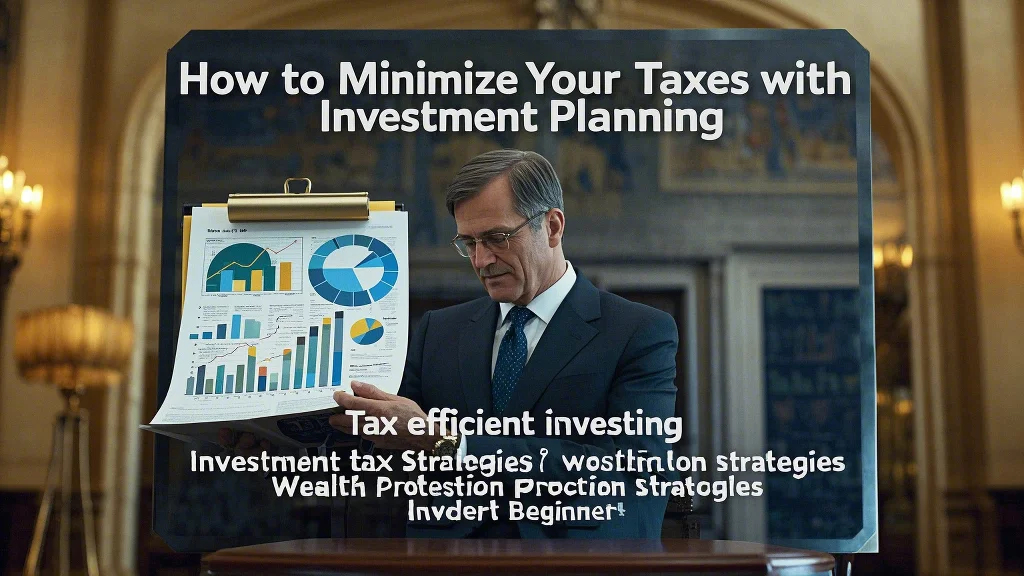The Fundamentals of Tax-Aware Investing
Understanding tax efficient investing begins with recognizing how different account types and investment vehicles create varying tax consequences. Taxable brokerage accounts, retirement accounts like 401(k)s and IRAs, and tax-free options like Roth accounts each demand distinct strategies. Many investors make the mistake of using the same approach across all account types, missing opportunities to minimize their tax burden. The key lies in asset location – placing investments in the accounts where they’ll generate the most favorable tax treatment.
Taxable accounts work best for investments that generate qualified dividends and long-term capital gains, which enjoy lower tax rates. Retirement accounts better suit high-turnover strategies or income-generating assets that would otherwise create annual tax liabilities. Municipal bonds deserve consideration in taxable accounts for investors in higher tax brackets, while corporate bonds typically belong in tax-deferred accounts. This strategic placement can add significant after-tax returns over time without requiring any additional risk.
Implementing Year-Round Tax Strategies
Sophisticated investment tax strategies aren’t just for April – they require ongoing attention throughout the year. Tax-loss harvesting, the practice of selling investments at a loss to offset gains, works best when implemented continuously rather than as a year-end scramble. Many investors miss opportunities by only looking at their whole portfolio’s performance rather than identifying individual lots with losses that could be harvested while maintaining market exposure.
Dividend timing matters too – knowing when stocks go ex-dividend helps avoid unexpected tax bills when buying near distribution dates. For those making estimated payments, aligning investment income with payment deadlines prevents underpayment penalties. The most tax-aware investors maintain a calendar of important tax events and regularly consult with their advisors about opportunities as market conditions change. This proactive approach yields better results than reactive year-end planning.
Protecting Wealth Through Tax-Smart Structures
Integrating wealth protection strategies with tax planning creates comprehensive financial defense. Trusts like intentionally defective grantor trusts (IDGTs) can remove assets from your taxable estate while allowing you to pay the income taxes, effectively transferring additional wealth tax-free. Family limited partnerships (FLPs) provide asset protection while enabling discounted transfers to heirs.
Retirement accounts offer creditor protection in many states along with their tax benefits, making them doubly valuable for wealth preservation. The order in which you withdraw from accounts in retirement – taxable, then tax-deferred, then tax-free – can significantly impact your long-term wealth. These strategies require careful coordination between your investment advisor, estate attorney, and tax professional to ensure all elements work together seamlessly.

Tax Basics Every New Investor Should Know
For those beginning their investment for beginners journey, understanding a few key tax concepts can prevent costly mistakes. The difference between short-term and long-term capital gains rates creates a powerful incentive to hold investments for at least one year and one day. Wash sale rules prevent claiming losses if you repurchase substantially identical securities within 30 days, requiring careful planning when tax-loss harvesting.
Cost basis methods (FIFO, specific identification, etc.) determine which shares are considered sold and can dramatically impact your tax bill. Tracking your basis is crucial, especially for reinvested dividends or dollar-cost averaged positions. Beginning investors should prioritize tax-advantaged accounts like IRAs and 401(k)s before building substantial taxable portfolios, as the benefits of tax deferral or tax-free growth compound dramatically over time.
Smart Portfolio Construction for Tax Efficiency
Smart investing for tax purposes involves more than just picking the right securities – it’s about how you structure your entire portfolio. Index funds and ETFs typically generate fewer taxable distributions than actively managed funds, making them more efficient in taxable accounts. Asset location strategies place bonds and REITs in tax-deferred accounts while keeping growth stocks in taxable accounts where they’ll qualify for lower capital gains rates.
Direct indexing takes tax efficiency further by allowing investors to own individual stocks that mimic an index while harvesting losses across specific positions. Tax-managed mutual funds are specifically designed to minimize taxable distributions through careful trading strategies. The most tax-efficient portfolios consider both pre-tax returns and the tax drag that can erode a significant portion of nominal gains over time.
Retirement Account Strategies for Tax Savings
Maximizing retirement account contributions represents one of the most powerful investment tax strategies available. Beyond basic 401(k) and IRA contributions, self-employed individuals can establish SEP-IRAs or solo 401(k)s with much higher contribution limits. Roth conversions during low-income years can provide tax-free growth for decades, though the timing and amount require careful analysis.
Required minimum distributions (RMDs) create tax planning opportunities as well as obligations. Qualified charitable distributions (QCDs) allow retirees to donate directly from IRAs to charities after age 70½, satisfying RMDs without creating taxable income. The backdoor Roth IRA strategy remains viable for high earners, though it requires careful attention to the pro-rata rule. These retirement account techniques can save thousands in taxes over an investor’s lifetime.
Estate Planning Considerations for Investors
Thoughtful investment planning extends beyond your lifetime through proper estate structuring. Step-up in basis at death means heirs inherit investments at current market values, eliminating capital gains on appreciation during your life. This makes holding appreciated assets until death particularly tax-efficient for taxable accounts.
Trusts can provide both estate tax benefits and control over how assets are distributed, though they require careful coordination with your investment strategy. Gifting appreciated securities to family members in lower tax brackets can be more efficient than selling and gifting cash. The most comprehensive plans consider both lifetime giving and testamentary transfers to optimize the family’s overall tax situation across generations.
Working with Professionals for Optimal Results
While many tax efficient investing strategies can be implemented independently, complex situations often benefit from professional guidance. A good financial advisor who understands taxes can help coordinate across accounts and implement harvesting strategies. A CPA familiar with investment taxation can identify deductions and credits you might miss.
Estate attorneys ensure your wealth transfer plans are tax-optimized and properly documented. The fees for these professionals often pay for themselves in tax savings and avoided mistakes. The most successful investors view these costs not as expenses but as investments in preserving their hard-earned wealth from unnecessary taxation.
